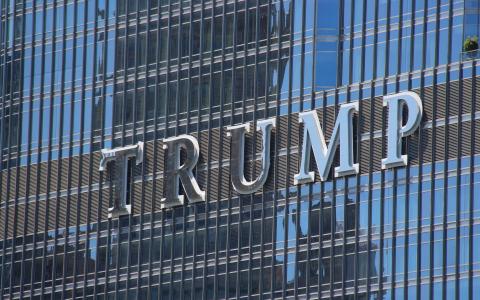
(The Street) - After Joe Biden’s disastrous performance in last week’s presidential debate, the likelihood of a victory for Donald Trump seems to have increased markedly.
If Trump does emerge victorious, one major question for the economy and your finances is: What will happen to interest rates?
Rates during the Trump presidency (2017-2021) slid amid low inflation and moderate economic growth. They remained historically low during the first year of the Biden administration.
But rates began surging in March 2022, as the Fed raised rates in the face of roaring inflation. Those rising prices stemmed from supply-chain disruption and the resulting shortages, heavy government spending to counteract the impact of covid, and plenty of money printing by the Federal Reserve to do the same.
Since the central bank stopped lifting rates in July 2023, they have fluctuated, ultimately moving higher. The 10-year Treasury note yielded 4.48% Monday.
Dips in inflation, economic growth
Now, inflation and economic growth are moderating, so the question for investors is when the Fed will start cutting rates. The economy expanded a modest 1.4% annualized in the first quarter.
The central bank’s favored inflation indicator, the Personal Consumption Expenditures index, rose 2.6% in the 12 months through May, down from 2.7% in April. The Fed’s inflation target is 2%.
The Fed looks closely at the core PCE index, which excludes food and energy. That metric climbed 2.6% over the latest 12 months, the smallest advance since March 2021, and was down from 2.8% in April.
All those data have experts looking to the Fed to start reducing rates this year. Interest-rate futures indicate a 63% chance that the Fed will cut rates at least once by September and a 61% chance it will lower rates at least twice by year-end.
The effects of rate fluctuations on you, the consumer, are mixed. Higher rates mean higher payouts on your bank accounts, certificates of deposit and money-market funds.
But they also you pay more on your home, auto, credit card, personal and student loans. Lower rates mean the opposite for all those areas.
Morgan Stanley on the Trump effect
So what does Trump mean for interest rates? Morgan Stanley strategists say it would likely mean lower short-term rates and higher long-term rates. That’s known as a steepening yield curve.
“The sharp shift of probabilities in favor of President Trump may be a unique catalyst that makes curve steepeners attractive,” they wrote in a commentary cited by Bloomberg. They were referring to trades that would benefit from a steepening yield curve.
One example would be to buy short-term bonds and sell long-term bonds.
Slowing economic growth under Trump would push short-term rates down, as investors would expect the Fed to cut rates to fight the slowdown. And long-term rates would rise amid climbing inflation.
Potential impact of deportations, higher tariffs
Trump’s promise to keep new immigrants out and expel many of those who are here could dent the economy, Morgan Stanley's analysts said. That’s because their presence has helped employers find the workers they need, giving the economy a boost.
His pledge to ratchet tariffs higher also could dent the economy by making it more expensive for manufacturers to produce their goods.
Higher tariffs also are inflationary, as they push up prices for the goods with tariffs. That would tend to push long-term rates higher.
Increased deficit spending also could lead to climbing long-term rates, the strategists said. A wider deficit means the government issues more long-term bonds to finance it. And that puts upward pressure on long-term rates.
So interest rates could be in for a wild ride if Trump wins.
By Dan Weil



